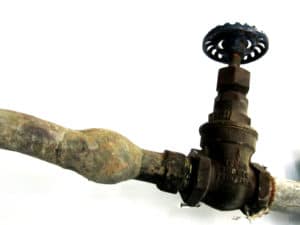EPA Administrator Signs Proposed Lead and Copper Rule Revisions (LCRR)
 On Thursday, October 10th, EPA Administrator Wheeler announced the signing of the proposed Lead and Copper Rule Revisions (LCRR) in Green Bay, WI. EPA’s website for the proposal also has links to a helpful infographic, a summary of the proposal, and a side-by-side comparison of the current Lead and Copper Rule to the LCRR. The pre-publication version of the proposal weighs in at a hefty 347 pages. The proposal has a 60-day public comment period, and is expected to be published in the Federal Register within the next two weeks (noting that the 60-day clock for the public comment period starts upon publication in the Federal Register).
On Thursday, October 10th, EPA Administrator Wheeler announced the signing of the proposed Lead and Copper Rule Revisions (LCRR) in Green Bay, WI. EPA’s website for the proposal also has links to a helpful infographic, a summary of the proposal, and a side-by-side comparison of the current Lead and Copper Rule to the LCRR. The pre-publication version of the proposal weighs in at a hefty 347 pages. The proposal has a 60-day public comment period, and is expected to be published in the Federal Register within the next two weeks (noting that the 60-day clock for the public comment period starts upon publication in the Federal Register).
EPA’s proposed regulatory approach focuses on six key areas:
- Identifying the areas most impacted;
- Strengthening drinking water treatment requirements;
- Replacing lead service lines;
- Increasing sampling reliability;
- Improving risk communication; and
- Protecting children in schools and child care facilities.
While this proposal still retains using first-draw, 1-liter samples for compliance and the calculation of a system-wide 90th percentile for comparison against the 15 ppb Action Level (AL), this proposal contains several significant revisions to the current LCR:
- Water systems will be required to develop a lead service line (LSL) inventory within three years, and for systems with LSLs, compliance samples will be at homes with LSLs.
- Building on a concept suggested by ASDWA, a “trigger level” of 10 ppb will be established to require systems to take certain actions to be better prepared in case of a future exceedance of the 15 ppb AL.
- Water systems will be required to develop a LSL replacement plan when above the “trigger level”, and would start replacing LSLs at a minimum of three percent a year with an action level exceedance (ALE).
- Water systems will be required to notify the public within 24 hours of an ALE, and to also notify residents within 24 hours if an individual sample is above the AL.
- Water systems will be required to annually sample 20% of the schools and licensed child care centers in the service area.
ASDWA will be carefully evaluating the proposal over the next several weeks, and is planning to submit comments to EPA.

